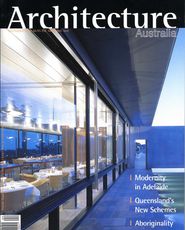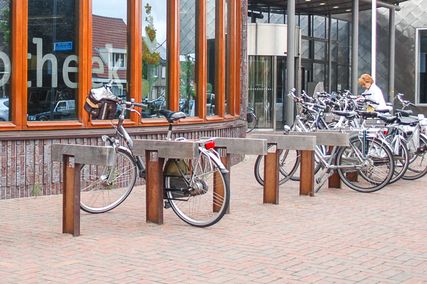Practice on the Net
By David Week |
|
Architecture is an industry of small groups. Some 80 percent of architects work in practices employing five people or less. Even the largest architectural practices are still ‘small business’ by the standards of the rest of the economy.
The best strategy for running a small business is to specialise-to create unique products and to develop niche markets in which you offer specialised capabilities or face limited competition. Studies in both the US and here show that the best architectural practices return a profit of 30 percent on turnover. Such margins are available only with innovative products and niche markets. Selling a standard service against broad competition leads to price-based competition, with profits that get scrunched to next to nix.
|

The Dumnadrochit Care Centre, Scotland; design by Chris Davenport in Scotland with David Week and Steve Loo in Sydney.
|
Our practice, Pacific Architecture, is continually exploring how to turn such precepts into practice. We have found that running with such a strategy implies a certain set of capabilities:
- To pull together specialised teams, usually from a geographically distributed network.
- To market and operate over a wide geographical area, in order to aggregate a niche market into substantial volume.
- To continuously adapt and reconfigure. What’s innovative today becomes irrelevant tomorrow; niches blossom and disappear.
These characteristics are natural to what’s been called the virtual corporation-networks of people linked by a common culture and powerful communication technologies. PA has grown organically into such an animal. Though we have only 4-10 people on the payroll, we’ve been able to secure and execute projects in more countries than we have people. In doing so, the Net has become first a handy and then an indispensable tool for keeping our network operating. |
Recently, a German journalist studying teleworking asked me (on the Net, of course) “What does it mean to manage over the Net?”
The primary skills-objective-setting, planning, monitoring, QA, team-building, delegation-are still needed. The technology does not alter human fundamentals. But using electronic networks to work over a distance does alter the group dynamics in interesting ways. Groups and group leaders need to understand these in order to use this technology effectively. Among the transformations:
- The group is more egalitarian, in that it is more difficult to project covert personal power over the wire than it is across a table.
- The work becomes self-documenting, for obvious reasons. Nothing gets said that isn’t written.
- For the same reason, though, there are certain kinds of problems which are difficult to deal with over the Net.When the direction of the workgroup is clear, asynchronous communication works well. But when the workgroup has lost direction, a phone-call or face-to-face works best.
- In a group around a table, some people can remain silent. Teleworking forces people to communicate. As someone in one workgroup said, “If you receive a piece of email, you can’t not reply”.
- People reflect more before they communicate, since they have to present what they want to say in a more formal format, and the chances are higher that consequences will follow. Out goes your message into the ether and someone may very well take it extremely seriously and act on it. You lose control of the response in a way that you don’t around a table.
- It’s very difficult to establish a workgroup electronically. What works best is if it’s established face-to-face, after which it’s easy to maintain it electronically.
- Chris Davenport and I, for instance, would not be able to work effectively in the way that we do-he in Scotland, me in Sydney-without the shared background that we have working in Papua New Guinea. Chris has been an associate of PA since 1989 and now works from his croft 300 metres above Loch Ness.
|
















